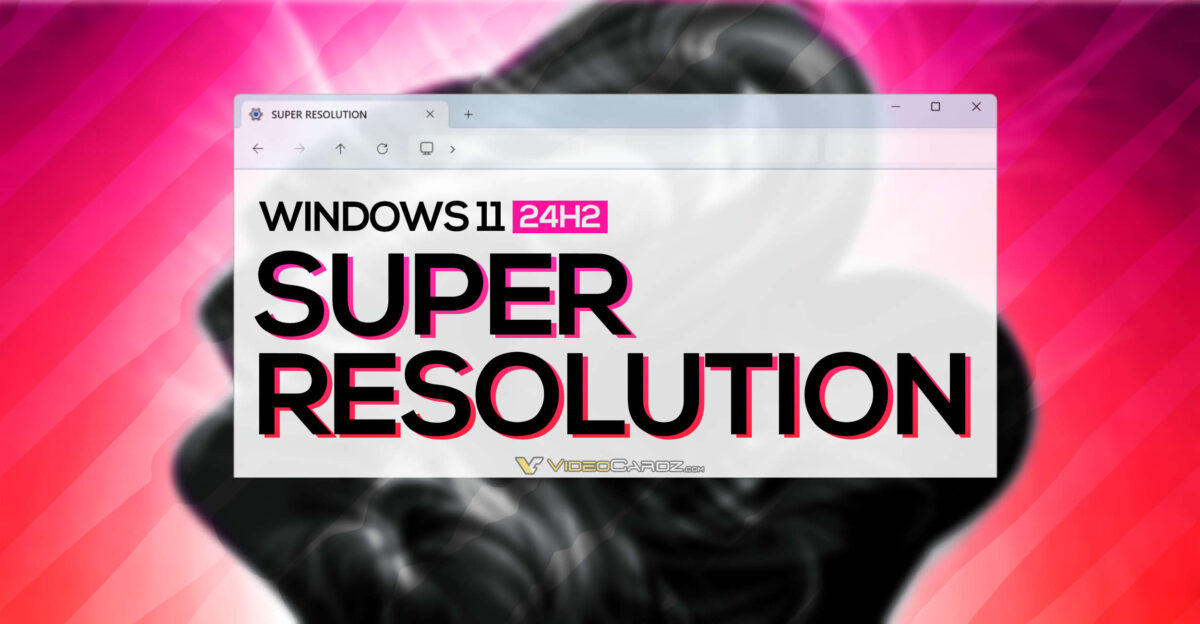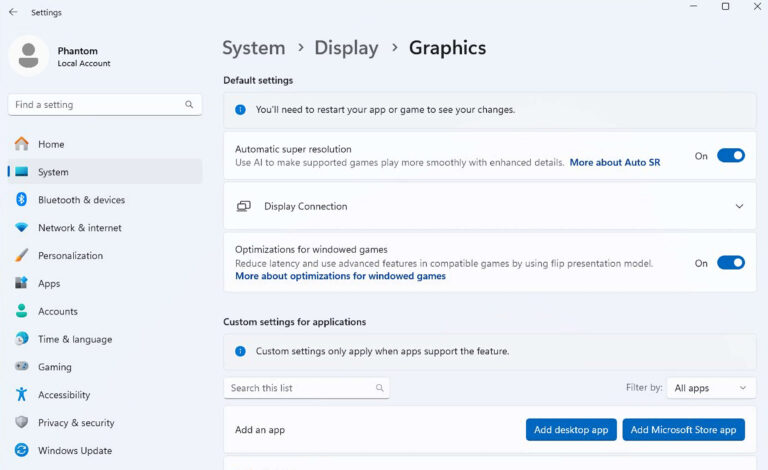Not just games anymore, Windows apps might be getting super resolution as well
Microsoft is working on adding super resolution to applications.

Super resolution tech has really shaken up the gaming scene, giving players a chance to up their gaming experience with improved performance, even if it means taking a hit on visuals. This innovation has also given game developers the ability to release titles that might struggle to run smoothly without these technologies, especially when dealing with advanced features like ray tracing or path tracing.
Microsoft is apparently exploring an idea to incorporate upscaling technologies for applications, as indicated by the discovery within the Windows 11 insider build of 24H2 release. The feature is supposedly hidden, but some power users were quick to find a reference to this technology and enable it.

Windows “Automatic Super Resolution” feature, Source: PhantomOcean3
The feature is to be located within the System → Display → Graphics options, where users can choose to either enable ‘automatic super resolution’ or change these settings per app. The feature would supposedly run on NPU/AI-cores as per the report, which should also include GPU tensor cores.
It is difficult to grasp the potential of such technology for Windows apps, but the first thing that comes to mind is the use of media players. Instead of relying on special app builds that use super resolution technologies like RTX Video Super Resolution or FidelityFX Super Resolution, all users would have to do is enable super resolution for the whole app.

Windows “Automatic Super Resolution” feature, Source: PhantomOcean3
Moreover, such settings could also be applied to games, potentially allowing users to enable something similar to Radeon Super Resolution, a driver-level upscaling for a broader spectrum of games that would simply never get official upscaling tech support (think retro games).
The feature is now present in the Windows 11 24H2 build, which is set to be released later this year. The exact date is not confirmed, nor has it been confirmed whether this feature will actually make its way to the public version before release.
Source: PhantomOfEarth

Brendan Martin is a tech enthusiast with a deep understanding of the latest technological innovations. He explores the intersection of science and technology, providing readers with insights into the digital revolution. When not immersed in the world of gadgets and code, Brendan enjoys experimenting with DIY tech projects.







